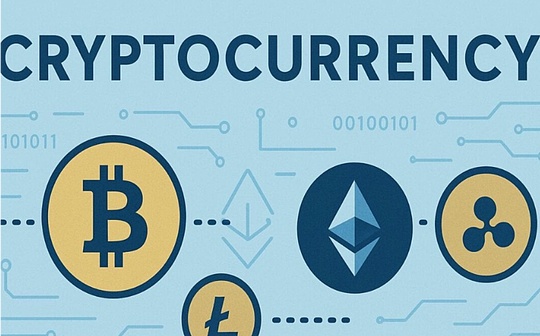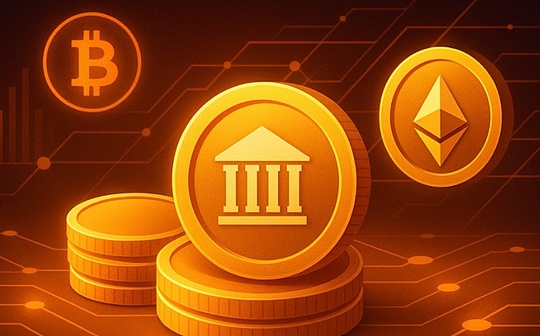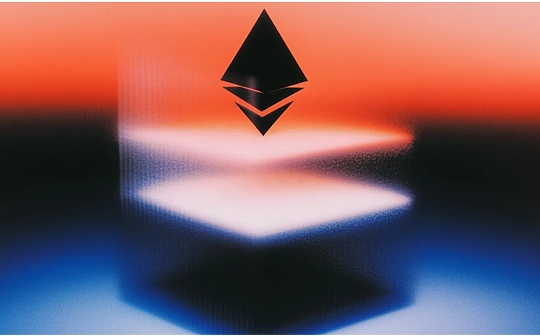
“Stock tokenization” is leaping from the edge of the crypto circle to the focus of global financial technology. A few days ago, the US SEC launched the “Project Crypto” under the leadership of the new chairman, in line with the Trump administration’s active policies and stablecoin strategy, aiming to make global funds more conveniently flow into high-quality assets such as the US stock market and consolidate the long-term leadership of the US capital market.At the same time, the concept of the on-chain capital market is spreading rapidly around the world, not only attracting the attention of crypto-native communities, but also gradually gaining the attention of traditional financial institutions.Against this background, we sorted out the multidimensional significance of stock tokenization for the traditional finance and crypto industry, discussed whether it can become a new narrative that promotes the new prosperity of the industry, and analyzed the compliance and uncertainty issues it faces.
1. What is the significance of stock tokenization to the traditional financial and crypto industry?
1.1 Changes in liquidity and settlement efficiency
Stock tokenization breaks the characteristic of lagging settlement in traditional financial markets.For a long time, whether it is US stocks or other mainstream markets, most of them have adopted a delayed trading system. The settlement cycles of “T+1” and “T+2” not only affect market liquidity, but also limit the efficiency of capital use.Stock tokenization is expected to achieve “Atomic Settlement”, payments and delivery can be completed almost instantly, and the exchange of assets and funds occurs simultaneously as an indivisible whole.This not only shortens the settlement cycle, but also releases funds originally locked in the settlement process, significantly reducing the risk of counterparty.Combined with the automatic execution capabilities of on-chain smart contracts, transaction matching and settlement can run almost in any time zone around the world, all year round, thus making 7×24-hour global transactions truly implemented.This efficiency upgrade is not only of great significance to high-frequency trading and cross-border arbitrage, but also has an extremely obvious improvement in capital utilization for ordinary investors.
1.2 Reconstruction of cross-border securities investment system
Traditional cross-border securities investment is limited by complex custody, agency banking networks and compliance review processes, which are inefficient and costly.Stock tokenization is based on distributed ledgers and smart contracts, and can directly embed compliance rules such as KYC, AML, and geographical restrictions into the asset itself.On the one hand, it reduces investors’ dependence on multi-tier intermediaries, because in the on-chain capital market, everyone can create their own wallets to directly hold and trade assets; on the other hand, programming compliance logic into token smart contracts can achieve automated compliance checks, reducing the execution cost of cross-border investment.Although the legal and regulatory frameworks of various countries are difficult to fully connect in the short term, changes on the technology side have laid a solid foundation for the reconstruction of the cross-border securities investment system.
1.3 The bridge connecting traditional funds with the world on the chain
In countries that currently clearly embrace stock tokenization, stock tokenization is not only a technological innovation, but also positioned as an important part of national financial strategies.It can digitize high-quality traditional assets, allowing global funds to enter the domestic capital market more easily.For traditional funds, this model retains the familiar investment targets and regulatory frameworks, but gains the advantages of settlement efficiency, liquidity and global trading periods brought by blockchain; for the crypto ecosystem, high-value and low-volatility high-quality assets are introduced as collateral and trading products, enriching the asset structure and financial tools on the chain, and bringing unprecedented incremental capital and new users to the crypto industry.Although it will take time to build a complete decentralized on-chain market in the future, the parallel pattern of traditional and on-chain capital markets will coexist for a considerable period of time and complement each other, and stock tokenization will become one of the bridges connecting TradFi and DeFi.
2. Can stock tokenization become a new crypto narrative?
From the perspective of community culture, native crypto users prefer high-risk, high-volatility, and ultra-high-yield speculative varieties – they are willing to hold Bitcoin heavily when it only has a few hundred dollars, or chase several or even dozens of times of return in projects such as Meme Coin and DeFi.In contrast, the stable returns of traditional assets such as treasury bonds and gold are limited to their attractiveness, which creates a question: Will this investment habit make it difficult for traditional assets to generate good liquidity on the chain?
In the short term, this cultural difference does exist, but stock tokenization is still one of the few RWA categories that may break this barrier.The key lies in the “dual characteristics” – on the one hand, it retains the value support and stability of the underlying high-quality assets; on the other hand, once tokenized, these stocks can be combined with derivative tools such as leverage, futures, options, etc. to create sufficient volatility and strategic space to meet the speculative needs of crypto users.Traditional assets still have the opportunity to bring significant investment returns, which will be attractive to crypto traders.In addition, changes in user investment structure brought about by the development of the crypto industry are equally important.As some early crypto participants complete wealth accumulation, their risk appetite will naturally decline and they will begin to actively seek diversified asset allocation and stable returns.At this time, tokenized traditional assets may gradually enter their investment portfolio. This type of user is not only concerned with price fluctuations themselves, but also with the characteristics of investment products that are “on-chain available” and “ready to trade”.
More importantly, the target audience of stock tokenization is far more than native crypto users, but also a huge number of potential users and institutional investors.For institutions, tokenization can retain traditional interests such as dividend distribution and voting rights, while providing 7×24 hours of liquidity and lower cross-border settlement costs, which are potentially attractive in private equity funds, family offices, sovereign wealth funds and other fields.For ordinary investors, familiar investment targets and compliance frameworks can lower psychological thresholds and make them more willing to allocate assets through on-chain channels.Therefore, stock tokenization is expected to become the “first step” for traditional capital to enter the DeFi world.This is not only the expansion of capital channels, but also the infrastructure construction of two-way capital flows – allowing traditional capital to flow smoothly into the on-chain market, and also providing a convenient path for on-chain funds to enter high-quality assets in the real economy.Therefore, the imagination space for stock tokenization is far more than the flow of funds within the crypto circle, but the value reshaping of the entire financial ecosystem.
3. What compliance risks does stock tokenization bring?
3.1 Unavoidable risks
While stock tokenization and on-chain capital markets have brought about improvements in efficiency and liquidity, they have also introduced new systemic risks and compliance problems. Here are some selected for analysis:
(1) The lack of rules and the issue of investor protection: There are currently no clear and complete regulatory and trading rules in relevant fields, and the market may become an “open playground” of disorderly competition, breeding uncontrollable risk events.In this case, allowing investors to influx without thresholds may trigger a series of market volatility, which, although have limited impact on AI or institutional investors, may be very unfriendly to retail investors.For the government, it is necessary to ensure that risk management and compliance mechanisms are followed simultaneously while promoting innovation, and avoid the lack of rules becoming a market hazard.
(2) Regulation and compliance issues: The decentralized characteristics of the on-chain market make it difficult to fully track transaction sources and flows, not only involving domestic users, but also participants from different regions around the world, increasing regulatory complexity.However, these risks are not unique to stock tokenization, and many problems already exist in the existing crypto market.For example, money laundering, illegal transactions and other behaviors have already occurred on the chain and will not deteriorate significantly due to stock tokenization.From the company level, traditional brokers and large financial institutions will continue to play the role of “gatekeeper” for the stock tokenization of listed companies, responsible for key links such as KYC and tax declaration, thereby buffering regulatory pressure to a certain extent; as for the tokenization of equity of private companies, due to its limited scale, it will have little impact on the overall market.
(3) Tax collection and management issues: On the one hand, decentralized on-chain transactions make it more difficult to track transactions. Due to the lack of unified intermediaries, it is difficult to collect transaction data and execute withholding tax through securities firms like traditional markets.On the other hand, cross-border tax collection and management are complex, and investors are distributed in different jurisdictions, involving multiple tax laws and information exchange mechanisms, and the coordination cost is high, which puts higher requirements on tax departments and industry participants in various countries.However, these challenges are similar to the current cryptocurrency tax issues and are not unique to stock tokenization.In the short term, the government can continue its existing strategies and manage taxes through centralized participants. In the long term, it may form a traditional and on-chain dual-track market, finding a balance between efficiency and controllable supervision.
3.2 Advice for individual investors
(1) Choose a platform with regulatory compliance and good reputation: Although stock tokenization sounds like a new hot spot in the blockchain world, investors are still facing platform risks first.Especially for newbies or investors with limited knowledge of the market, they should give priority to platforms that have passed strict regulatory review, complete qualifications and good reputations to protect their own funds’ safety and legitimate rights and interests.For example, the compliance process, KYC/AML mechanism and customer fund isolation system behind tokenized stocks issued in cooperation with traditional brokers, banks or large financial institutions will be more complete.
(2) Diversify investment and control positions: There are obvious differences in volatility between the crypto market and the traditional market, and stock tokenization is just at the intersection of the two, which means that it is possible to enjoy both dual returns and may bear dual risks.Therefore, investors should avoid blindly holding on to a single target or concentrating on one platform, and diversify allocations between different asset classes and platforms to reduce investment risks.
(3) Invest in familiar assets: Tokenized stocks are essentially another manifestation of the original assets. In the new market environment, you should give priority to the company, product or industry you are familiar with to ensure that investment decisions are based on familiar industry logic and avoid market sentiment affecting rational choices.
(4) Clarify product structure and rights and obligations: The underlying design of tokenized stocks is quite different. It may be a real holding stock (the shareholder rights that owns the underlying assets) or a price contract stock (only tracking the price and not having shareholder rights).Before investing, you should clarify what structure you are buying, understand its structural differences in dividend distribution, voting rights, liquidity, exit mechanisms, etc., evaluate the corresponding risks, and avoid misjudgment of investment.
(5) Compliance tax payment: Tokenized stocks do not belong to the “tax gray area”. No matter how the transaction pattern changes, investors’ tax obligations still exist.Therefore, it is recommended that investors should keep transaction records, capital flow and cost information throughout the transaction to ensure that capital gains or dividend income can be accurately calculated during declaration.At the same time, pay attention to the tax classification of tokenized stocks in the jurisdiction where they are located. The tax rates and declaration methods of different tax classifications will be different.Actively fulfilling tax obligations can not only avoid legal risks, but also maintain compliance qualifications when supervision is tightened in the future, and avoid being traced back due to historical issues.
4. Conclusion
To sum up, stock tokenization is at the intersection of technological change and institutional reshaping. It is not only an important part of the digital transformation of the global capital market, but also a key link connecting TradFi and DeFi.In the short term, it may be more reflected in the optimization of liquidity, settlement efficiency and trading periods, but in the long run, its real potential lies in reconstructing the issuance, circulation and management methods of global assets, and forming a wealth ecosystem that revolves with the real economy on the chain.
However, opportunities and challenges have always coexisted.The lack of rules and investor protection determines that the maturity of this market will inevitably be accompanied by institutional running-in and regulatory game.For industry participants, grasping the policy window period and actively promoting the integration of technology and compliance will be the key to gaining the opportunity; for investors, rational choice of platforms, decentralized allocation, and compliant tax payments are the survival rules based on this emerging market.
It can be foreseen that with the improvement of on-chain infrastructure and the deep integration of traditional finance and crypto ecosystems, stock tokenization is expected to become the common language between the crypto industry and the global capital market in the next stage, giving birth to new investment logic and wealth opportunities.In this process, those participants who can balance innovation vitality and robust compliance will occupy an important position in the future financial landscape.






